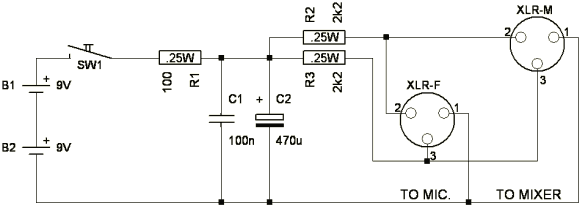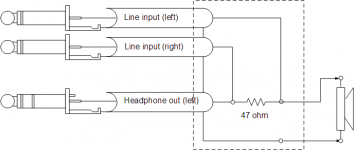Hi Ivo,
Many people don't realise just how much Fs can vary with drive level, I actually plotted Fs vs drive level for two different drivers (measured using ARTA but plotted in excel) here:
http://www.diyaudio.com/forums/multi-way/182688-help-understanding-physics-vas.html#post2462768
On some drivers the shift is dramatic! Because T/S parameters change so much with drive level I model the bass response of the speaker for both the small signal and large signal values to see how much the response will vary with drive level...
Hi, I agree with your discussion.
One thing is also very often discussed: why measurement with LIMP and some manufacturer data for T/S parameters differs.
It is true, as I have measured hundreds of drivers and very often manufacturer data were different from my measurement results. Difference were large even for resonant frequency fs.
There are many explanations for this: change in compliance with level, change in compliance with time, change in mass for treated membrane, different air loading in test baffle, and some more..
Measurement method was not problem, as measurement of fs is almost always correct.
In last version of LIMP I have added way to control quality of T/S parameter estimation, by adding possibility to do a comparison of measured impedance curve with one obtained by simulation from T/S parameters. I hope this feature will be welcomed.
like to thank you for this wonderful program.
here is a pic of my measurebox.

It seems a nice work. Do you intend to say some words more about features?
Best,
Ivo
front side is the bild in amp 10 watt the switches for arta/limp phantoom power/mic and speaker conn.
top is acurate ohm meter
the yellow connections in a circle are 1% resistors 2.7ohm to 8.6 ohm for calibration of the ohm meter.
on the back side is an usb audio interface, and power connection
.
top is acurate ohm meter
the yellow connections in a circle are 1% resistors 2.7ohm to 8.6 ohm for calibration of the ohm meter.
on the back side is an usb audio interface, and power connection
.
top is acurate ohm meter
.
It is really a good and usefull idea to put ohmmeter in measuring box.😎
Ivo
Hi Ivo,
Proud to see my countryman's success worlwide recognized.
I am sure one day in the future, I'll be an ARTA user once my Clio
Lite system on ISA bus and PII 450 Mhz dies.
Proud to see my countryman's success worlwide recognized.
I am sure one day in the future, I'll be an ARTA user once my Clio
Lite system on ISA bus and PII 450 Mhz dies.
I am hopeful someone has a measuring box for sale.
I was not able to build the measurement box, or I'm just not bright enough.
I will even pay for someone to build the box for me.
Any offers?
Billy
I was not able to build the measurement box, or I'm just not bright enough.
I will even pay for someone to build the box for me.
Any offers?
Billy
Hi epa,
Would love to see your schematics and parts list if you are willing to share them.
Thanks
Jay
Would love to see your schematics and parts list if you are willing to share them.
Thanks
Jay
.. maybe there are some more interesting hardware Projects:
Loudspeaker Measurement System [130453-I] | Elektor Labs
DIY-HIFI-Forum - Einzelnen Beitrag anzeigen - Messbox mit Verstärker
Regards
Heinrich
Loudspeaker Measurement System [130453-I] | Elektor Labs
DIY-HIFI-Forum - Einzelnen Beitrag anzeigen - Messbox mit Verstärker
Regards
Heinrich
By the way, Ivo,
Was wondering about the feasibility of a graph in ARTA/STEPS that allows for assessing the audibility of resonance, as you described in your paper. Something that calculates a q-factor or a resonance, perhaps seen in freq response vs frequency to assess how audible a resonance would likely be? Not sure if this is a reasonable request but it seems like it could be a useful tool.
Was wondering about the feasibility of a graph in ARTA/STEPS that allows for assessing the audibility of resonance, as you described in your paper. Something that calculates a q-factor or a resonance, perhaps seen in freq response vs frequency to assess how audible a resonance would likely be? Not sure if this is a reasonable request but it seems like it could be a useful tool.
I have some questions about ARTA I hope someone can light me up:
1- ARTA manual says it need an amplifier from 10 - 50 watts. will ARTA calibrate itself with amplifier power? is amplifier sonic performance (linearity,...) important here? what class of amplifier is good to be used for ARTA? D?A?
2- do we need an extra box for measuring T/S? is there any schematic for a newbie?
3- can I make a box and put amplifier + USB card + phantom power + impedance switch box and all connections needed in it?
thanks
Last edited:
By the way, Ivo,
Was wondering about the feasibility of a graph in ARTA/STEPS that allows for assessing the audibility of resonance, as you described in your paper. Something that calculates a q-factor or a resonance, perhaps seen in freq response vs frequency to assess how audible a resonance would likely be? Not sure if this is a reasonable request but it seems like it could be a useful tool.
I made the software that calculate resonances parameters almost 20 years ago. I was using Matlab with lot of function from Signal and Control Systems toolbox. The program needs lot of interaction with user.
I would like to implement that method of transfer function estimation in parametric form also in ARTA, and it will be probably be done in ARTA ver. 2.0, but I have to find way how to easy include user to distinguish peaks and dips that comes from resonances from those that comes from wave reflections. The method is not good if there are reflections.
If I succeed it will be really a great tool for loudspeaker design.
Best,
Ivo
1- ARTA manual says it need an amplifier from 10 - 50 watts. will ARTA calibrate itself with amplifier power? is amplifier sonic performance (linearity,...) important here? what class of amplifier is good to be used for ARTA? D?A?
I usually recommend solid state amplifiers, that have THD bellow 0.1% in worst case. The bridged amplifiers are not good for ARTA setup.
The power is not the issue, it depends on what type of measurements you are doing. For loudspeaker crossover design you can use small power 10-20W amps, but for testing of loudspeaker maximum output SPL you need much power.
In measurement of room acoustics you also need more power.
2- do we need an extra box for measuring T/S? is there any schematic for a newbie?
If sound card has headphone output channel, which is the case for all pro sound cards you do not need special hardware.
Attached picture shows simple cabling if you have professional sound card.
3- can I make a box and put amplifier + USB card + phantom power + impedance switch box and all connections needed in it?
See links that Ente gave.
Best,
Ivo
Attachments
Last edited:
i combined al of thes together in this box.
phantom power.

ohm-meter
amp
usb soundcard
and ofcource the measuring box from the arta website link
phantom power.

ohm-meter
amp
usb soundcard
and ofcource the measuring box from the arta website link
i forgot pre-amp for the mic
pre-amp shares the batteries with the phantom power
power from the amp can be used for the ohm meter as wel .
just use this schematic
pre-amp shares the batteries with the phantom power
power from the amp can be used for the ohm meter as wel .
just use this schematic
I'll build a measurement box put everything in 2-3 boxes. is someone kind enough to check if I'm missing something?
calibrate mic
Behringer sound car with phantom power (I don't need external phantom power, right?)
a 30 watts calss D amplifier (should have a volume control?)
an Arta measurement box shown here
do I need a dBu meter? Ohm meter?
I think I put sound card and ARTA circuit in a separate box and amplifier and it's power transformer in another box.
calibrate mic
Behringer sound car with phantom power (I don't need external phantom power, right?)
a 30 watts calss D amplifier (should have a volume control?)
an Arta measurement box shown here
do I need a dBu meter? Ohm meter?
I think I put sound card and ARTA circuit in a separate box and amplifier and it's power transformer in another box.
ARTA 1.8.3
ARTA 1.8.3 is published now!
The following changes are made:
ARTA - plot of directivity pattern is reorganized. Bug with 1 degree step removed.
ARTA - occasional bug in presentation of unwraped Phase removed
STEPS - measurement of loudspeaker maximum SPL now with enlarged dynamic range 30-46 dB.
LIMP - no changes
Regards
Heinrich
ARTA 1.8.3 is published now!
The following changes are made:
ARTA - plot of directivity pattern is reorganized. Bug with 1 degree step removed.
ARTA - occasional bug in presentation of unwraped Phase removed
STEPS - measurement of loudspeaker maximum SPL now with enlarged dynamic range 30-46 dB.
LIMP - no changes
Regards
Heinrich
Thank you very much for update... Arta is very good and sophisticated software...
I have a question, You could program icon in Arta, Frequency response and distortions, little would simplify the work...
One more, should the importance of the length of the sequences selected with more than 256k?
I have a question, You could program icon in Arta, Frequency response and distortions, little would simplify the work...
One more, should the importance of the length of the sequences selected with more than 256k?
Greater resolution, test sweeps take longer. 256 is quite good for general purpose use. If looking at much finer detail the higher sample lengths resolve better.
I have a question, You could program icon in Arta, Frequency response and distortions, little would simplify the work...
I will take you request for new icon in my ToDo list.
One more, should the importance of the length of the sequences selected with more than 256k?
Concerning length of recording, there is one common believe that using longer sequence we get lower noise floor. It is true, but only if we measure in time invariant system. In acoustical systems, speed of sound is very often time variant (due to air flow and temperature changes). In that cases it is better to choose the shortest possible recording length.
A practical reason to limit recording length is that lot of ARTA users use computers with Windows XP OS. Such computers usually have 256MB of memory installed, and that memory is almost all used by the OS - a very small amount is left for ARTA (which keeps all data in memory).
In future I will double recording lenght and make special version for WIN XP,
although I think that 256K is really enough in almost all situations.
Best,
Ivo
